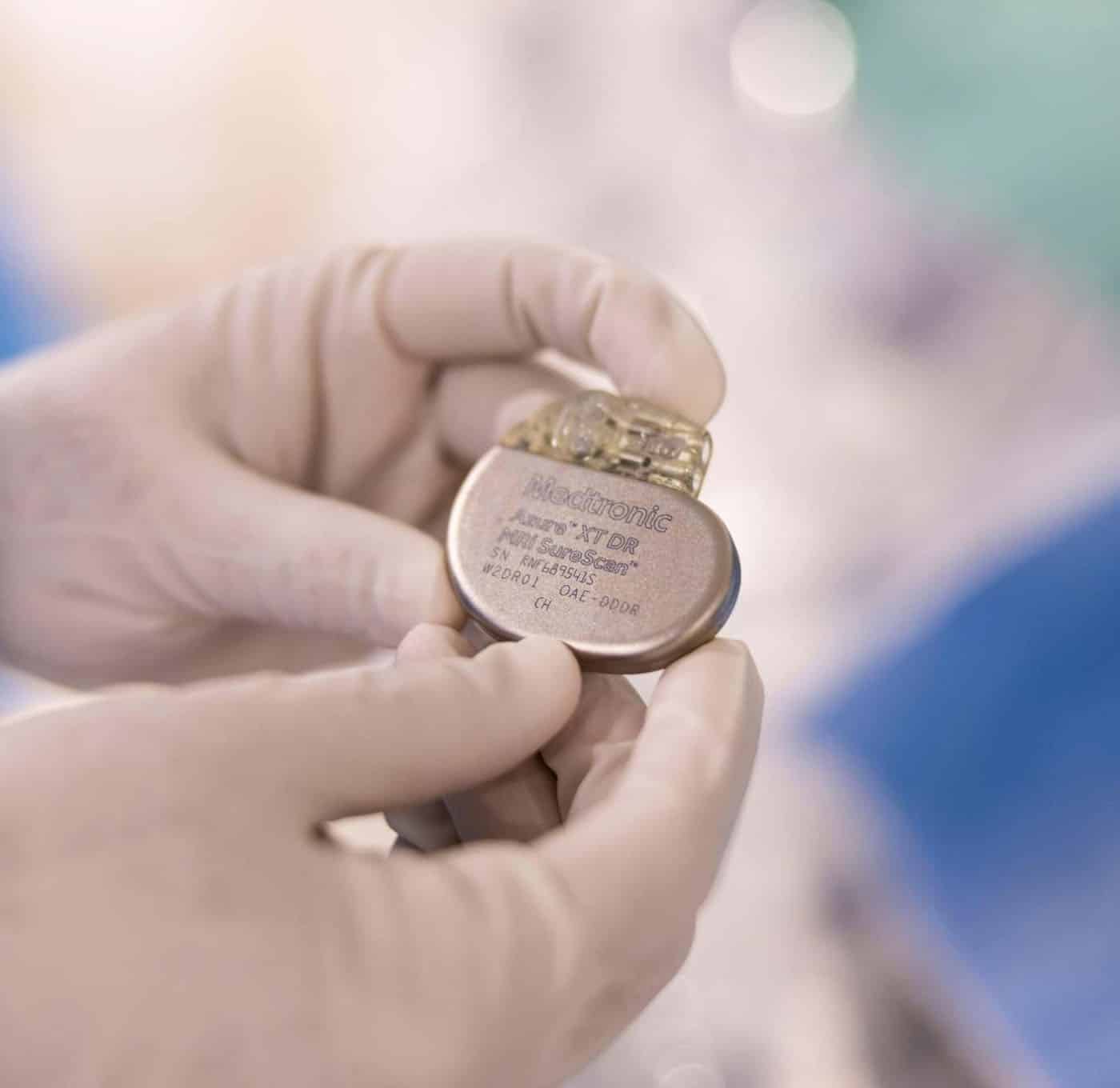Your doctor has recommended you undergo the implantation of a permanent pacemaker (PPM).
You might not have heard this medical term before now and may be feeling unsure about the nature of the procedure.
This information sheet will outline what the procedure involves, what preparations are required and what risks are involved.
After you read this information sheet, you might still have questions. If you do, please contact the team at Heart HQ. We’re here to help.
What’s a pacemaker?
A pacemaker is a small device that treats a slow heart beat.
There are three different types of pacemakers. Your doctor will advise which one best suits your condition.
- Single chamber—features one lead that goes to the lower chamber of your heart
- Dual chamber—features two leads, one to the upper and one to the lower chamber of your heart
- Biventricular—features three leads, one to the upper and two to the lower chamber of your heart
All types of pacemakers are made of two parts—a battery-powered pulse generator which gives off impulses and a lead/s which carries impulses to and from the heart.
Everyone’s heart is different, so your pacemaker will be ‘programmed’ by your doctor especially for your needs. Once it is installed, it will be checked by a technician using an external machine and the rate of the pacemaker can be set. Tests will be done where the pacing speed will be temporarily increased and decreased. Then a ‘normal’ pacing speed will be set.
Your pacemaker is designed to ‘stand by’ until your heart rate falls below the set rate determined by your doctor. If this occurs the device will step in and ‘pace’ your heart rate to the set level.
How does it work?
An intravenous line (IV) will be placed into a vein in your arm. This is for the medical team to administer medication throughout your procedure. You may be given antibiotics to prevent infections. A sedative will also be given.
You will have an injection of local anaesthetic below your collarbone. Using a small incision, your doctor will thread the pacemaker lead/s into a vein and down to your heart.
During the procedure, your doctor will be able to see see the lead/s using x-ray imaging. Once the lead/s are positioned correctly, we will test them to make sure they are working properly.
The leads will then be connected to the ‘pulse generator’, which will be placed under the skin before the skin is sewn back together.
What do I need to do to prepare?
You will need to fast for six hours before the procedure.
What happens after the procedure?
The procedure is performed in hospital with an overnight stay.
Please note you will not be able to drive a vehicle for two weeks after having a pacemaker installed. Please limit your arm movement on the side of the pacemaker for the first two weeks to allows the pacemaker levels to settle.
We will check the device system in your device clinic appointments.
It is important that after your pacemaker has been implanted, you remember to tell your other treating medical teams in the future, especially if an MRI has been ordered.
What kind of risks are associated with this procedure?
Any kind of procedure carries some element of risk, often very small and rare.
Your doctor has balanced the benefits and risks of carrying out the test against the benefits and risks of not proceeding. If your doctor has recommended this procedure, they believe there is benefit to you going ahead.
It’s important you understand the risks involved so you can make an informed decision.
Here are the most commonly reported risks and complications associated with a pacemaker installation.
Uncommon risks and complications (1–5% of cases)
- The pacemaker lead can move—the lead will need to be put back in place by repeating this procedure
- Some bruising if you are taking blood thinning medications
- Pocket bleeding
- Pocket infection
Rare risks and complications (less than 1% of cases)
- A punctured lung—this may require a tube to be inserted into the chest to reinflate the lung
- Blood clot in the subclavian vein
- A hole is accidentally made in the heart of heart valve—this may require surgery or drainage to repair
- Blood clot in the lung
- Heart attack
- A stroke—this can cause long-term disability
- Death is possible due to the procedure or other heart problems
Permanent pacemaker info sheet
Pulse Generator Change info sheet
